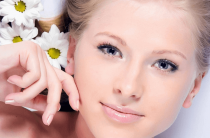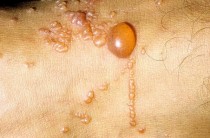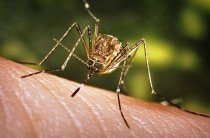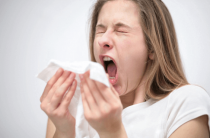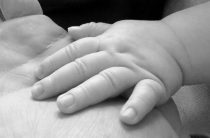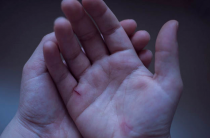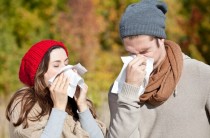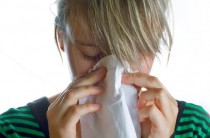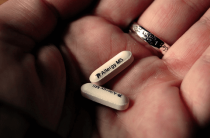Allergic urticaria is a common manifestation of the body's hypersensitivity to some factor. Often, signs of allergies appear on the skin, and urticaria is a vivid confirmation of this. The disease received this name due to the fact that its main symptoms resemble those that appear after a nettle burn.
Doctors also refer to urticaria as Quincke's edema, which is a severe form of allergy. It is characterized by the rapid formation of edema in various parts of the body. If time does not provide assistance to the patient, a fatal outcome is possible. But there is no need to immediately panic, because such a manifestation of an allergy is rare, and if it does happen, then the modern level of medicine allows you to cope with it.
 The risk group includes women aged twenty to sixty years. According to scientists, throughout life, a third of the population has manifestations of urticaria on the skin, but only a small part of these people will need to turn to specialists due to the severity of symptoms.
The risk group includes women aged twenty to sixty years. According to scientists, throughout life, a third of the population has manifestations of urticaria on the skin, but only a small part of these people will need to turn to specialists due to the severity of symptoms.
Varieties of the disease
Allergic urticaria can manifest itself with varying intensity and under various circumstances. According to these criteria, doctors divide it into the following types:
- Sharp. It occurs immediately after contact with the allergen. Symptoms are very pronounced, but quickly disappear. After the allergen ceases to enter the body and the patient begins to take antihistamines, all manifestations of urticaria disappear on the patient's body. Very rarely they remain on the skin for a couple of days. It lasts from several hours to several days.
- Chronic. Her symptoms bother the patient for quite a long time. They are not very pronounced, so the patient delays the visit to the doctor. Above all, it is important to carefully monitor the state of your health and body. Exacerbations of urticaria can be observed when exposed to cold air, sunlight and other factors. For example, if a person uses cosmetics and stays in the sun for a long time, there is a high probability that he will soon develop a rash and severe itching. This form of allergy can last up to a month and a half, disappear and reappear.
- Quincke's edema. This is a severe form of allergy that threatens human life. Due to the fact that the walls of the blood vessels become very permeable, a pronounced edema appears. Puffiness is formed in those places where there are layers of adipose tissue, and there are all conditions for the accumulation of fluid.
There is another classification of urticaria, depending on the factors that cause it:
- papular. Occurs due to an insect bite.
- Physical, which includes:
Thermal.
It appears after a person has come into contact with a hot object. Cold.
It occurs as a response to the influence of low temperatures on the body. Solar.
It appears due to the fact that ultraviolet or infrared radiation affects the skin. Vibratory
Aquagenic
Pressure delayed
Dermographic - pigmented. It is characterized by red-brown spots on the body.
- Food. Occurs after eating foods that contain allergens.
- Medicinal.
It is not necessary that allergic urticaria should be caused by allergic factors, it can also occur due to parasitic invasion, a violation of the proper functioning of the liver. Pseudo-allergic urticaria can be eliminated only by curing the underlying disease. In order to do this, dietary nutrition, drug therapy are used. To eliminate the external signs of the disease without eradicating its cause does not make sense.
Separately, urticaria is isolated, which occurs on a nervous basis. It appears most often between the ages of ten and thirty. The reason for its development is considered to be the stimulation of nerve fibers by various factors. These most often include emotional experiences, physical overstrain, a shower with very hot water, excessive sweating. Signs of this type of urticaria disappear after the factors cease to act. The rash very often covers significant areas of the skin, the patient's breathing is disturbed due to bronchospasm, migraine occurs, sometimes he loses consciousness, blisters on the body are very small in size, in the form of points.
Causes of the disease
At first glance, it may seem that allergic urticaria is caused by contact with the allergen, but this is not always the case. Allergy in the form of urticaria can be triggered by the following factors:
- atopy, or an innate feature of the human body, which serves as the basis for the development of pathologies. Therefore, when the doctor collects an anamnesis, it is very often found that the patient's relatives are allergic.
- plants - quinoa, wormwood, ambrosia.
- household allergens - house dust, animal hair.
- allergens that got inside along with food, air, or through the skin. They can provoke various specific reactions, the consequences of which are symptoms. Anything can be an allergen: a dairy product, bright fruit, flower pollen, cosmetics, and others.
- drugs, which are chemical compounds that act on the body. The most aggressive reaction of the body occurs in response to antibiotics, non-steroidal anti-inflammatory drugs. The onset of symptoms can be both instantaneous and after a long period of time.
- insect venom containing foreign proteins. These substances often become very strong irritants, causing severe itching, redness of the skin, and sometimes Quincke's edema.
- pregnancy, during which cardinal changes occur in the female body, due to which the reaction to previously safe substances can be unpredictable, sometimes causing allergic urticaria.
- industrial allergens, which include salts of heavy metals.
- contact substances, which include latex, household chemicals (various washing and cleaning powders, gels).
- physical factors: cold, pressure, sun rays, water, vibration, urticarial demographism.
Also one of the categories that causes allergic urticaria are unknown causes. More than ninety percent of cases of chronic urticaria have no clear cause. According to doctors, it is caused by autoimmune disorders. That is, the body begins to produce antibodies to its own proteins, which causes an allergy.
Urticaria symptoms
Allergy in the form of urticaria has rather specific symptoms, which is why the diagnosis does not take a long time, and it is possible to start treatment on time:
- the attack begins rapidly, and in a few minutes the symptoms increase very strongly;
- a rash with urticaria has the appearance of blisters that occur due to intercellular edema. The blisters are similar to those that appear with a nettle burn. Do not confuse them with bubbles, which are volumetric formations filled with a clear liquid;
- often the foci increase very rapidly and merge into one. At this time, the patient becomes worse: he begins to have a fever, chills appear. Such manifestations are called nettle fever;
- rash spots are often localized on the back, arms, and of course on the mucous membranes;
- the person has difficulty breathing and swallowing;
- accompanies the above symptoms with unbearable itching of the skin, due to which the patient combs it to the blood;
often symptoms are also a rapid heartbeat and a decrease in blood pressure; - a person develops rhinitis, sneezing, burning of the nose.
It is important to take timely measures to eliminate the symptoms, and then they will disappear in a few hours. There will be a reverse suction of the fluid into the vascular bed and the blisters will disappear. Then the body will stop itching.
The rash on the body can be located both symmetrically and asymmetrically, be large or small, pink or red.
Quincke's edema
It is very important to be able to distinguish between ordinary urticaria and Quincke's edema in order to take action in time and maintain your health. Quincke's edema is characterized by the following symptoms:
- In places where the adhesion of the skin to the underlying tissues is loose, fluid accumulates and a strong edema forms (on the eyelids, lips, external genitalia);
- Body temperature drops and skin tone becomes pale;
- In severe cases, swelling of the larynx occurs, in which air cannot flow normally into the lungs. The person may die from suffocation.
First aid for hives
Depending on what exactly provoked allergic urticaria, the following priority actions should be taken:
- stop taking medication;
- if the allergy is food, drink an enterosorbent, do a gastric lavage, take a laxative;
- if you are allergic to an insect bite, then the first step is to remove the sting from the skin;
- if the allergy is contact, eliminate the irritating substance from the person.
The next step is to start taking antihistamines.
If symptoms of anaphylaxis or Quincke's edema become noticeable, you should immediately call an ambulance.
Urticaria treatment
Treatment of allergies in the form of urticaria will be more effective if you have a complex effect on all stages of the development of the disease:
Avoid contact of the body with the allergen. Such a step can be taken by those patients who know exactly what they are allergic to. It is likely that in order not to come into contact with a certain substance, you will need to change your habits, do not eat certain foods. If you approach this issue responsibly, the manifestations of allergies may never appear again. But if not, then the allergy will return time after time.
Taking antihistamines. It is an excellent option for those who know that after a short time, allergy symptoms (rash, redness) will begin to appear on their body. The drugs of the modern generation are practically harmless, they perfectly block histamine receptors, a substance on which the manifestation of symptoms depends. It is best not to take these drugs in pill form. Preference should be given to injections that begin to act faster.
Reception of enterosorbents. When the cause of the allergy is the foods consumed the day before, sorbents will be very effective. They will not affect the immune system, but they will absorb the "harmful" contents of the intestine. Thus, toxic substances will not enter the bloodstream, and there will not be a significant burden on the body.
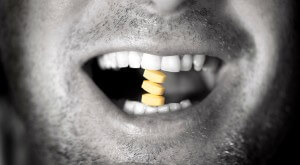 Conducting vitamin therapy. It makes it possible to improve metabolism, has no side effects.
Conducting vitamin therapy. It makes it possible to improve metabolism, has no side effects.
Taking hormonal drugs. It is prescribed by doctors only in the most severe cases, because such drugs have a number of side effects.
Conducting desensitization. According to this technique, the doctor must introduce a small dose of the allergen into the patient's body, in response to which a small amount of antibodies will enter the bloodstream. The reaction of the body will not be very pronounced. By gradually introducing the allergen in increased doses, there will be a gradual release into the blood of the entire supply of substances that react to it, and soon it will be depleted, and the allergy will not appear.
Also, proper skin care is very important. You need to treat your skin very carefully, due to the fact that it is sensitive, it is necessary:
- minimize exposure to the sun;
- use natural cosmetics, and a minimum amount of household chemicals;
- do not take a bath and shower with hot water, only warm. No need to rub the skin with a washcloth, thereby injuring it;
- wear comfortable clothes that are made of natural fabrics, loose, do not squeeze the skin, do not interfere with movements, “breathe”.
Diet food for allergic urticaria
Nutrition for allergic urticaria is adjusted according to the same rules as for other types of allergies:
- The product that provokes allergies is excluded from the diet. And also the patient is prescribed a hypoallergenic diet.
- All dairy products are removed from the menu.
- It is not recommended to eat exotic fruits and vegetables of bright colors. It is better not to make new experiments with nutrition, and limit yourself to already familiar products for a while.
- Do not eat seafood.
- Refuse nuts, bee products, dried fruits.
- There is only low-fat boiled or stewed meat, in any case, not fried.
- The same applies to vegetables, which are best boiled or stewed, but not fried. Brightly colored vegetables are also not recommended.
- The best side dishes are buckwheat, rice, cereals or boiled potatoes.
- Use a minimum of spices, and only vegetable oil.
Depending on the level of allergenicity, products are divided into three categories:
- Highly allergenic. It is necessary to give up canned food, chocolate, flour products, eggs, seafood, coffee, citrus fruits, berries, vegetables of bright colors, sausages.
- Medium allergenic. It is necessary to limit the consumption of meat, potatoes, peas, buckwheat, wheat, corn, peaches, apricots, bananas.
- Low allergenic. It is necessary to use milk, oatmeal, semolina, pearl barley, organ meats, vegetable oil, certain types of vegetables with caution.
Alternative treatment
You can start treating allergies on your own only if you have previously consulted with a doctor.
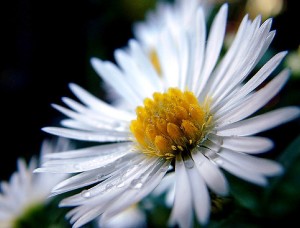 You can take baths with medicinal herbs, which include string, celandine, sage, St. John's wort, chamomile, valerian. They are taken in equal amounts, poured with a liter of water and boiled for 10 minutes, after which they are infused for thirty minutes, filtered and added to the bath.
You can take baths with medicinal herbs, which include string, celandine, sage, St. John's wort, chamomile, valerian. They are taken in equal amounts, poured with a liter of water and boiled for 10 minutes, after which they are infused for thirty minutes, filtered and added to the bath.
The water in the bath should not be too hot (38 degrees). Such water procedures should be done 3 times a week for five to ten minutes.
There is another effective option for bath infusion. To cook it, you should take marjoram (200 grams), pour it with two liters of boiling water and add a little pure ash to this mixture. Boil everything together, then cool and carry out dousing.
Garlic compress is effective for eliminating the symptoms of allergic urticaria. Prepare it like this: take one small head of garlic, chop, pour 400 ml of boiling water and boil this mixture over a fire until its volume is halved. After the broth is filtered, mixed with 200 ml of hot temperature olive oil, and beeswax. This ointment is used only after it has cooled.
The following allergy medications are taken orally:
- half a teaspoon of marsh calamus powder, washed down with hot water;
- mix equal amounts of horseradish juice and honey, take 1 teaspoon three times a day;
- mint infusion (2 tablespoons of mint per 1.5 cups of water) is consumed three times a day, three tablespoons;
- celery root juice drink 2 teaspoons three times a day for half an hour before meals.
A decoction of raspberry roots can help get rid of the rash. In order to prepare it, take 50 g of roots and pour water, then boil for 20 minutes over low heat, filter. Take 100 ml 6 times a day.
Prevention of urticaria
In order to protect yourself from allergic urticaria, you should follow these recommendations:
- bathe and wash hands only in warm water, not hot or cold;
- do not use aggressive grades of liquid soap;
- after the bath, apply moisturizing creams or gels to the skin;
- dry only with a soft towel;
- wear cotton clothing that does not restrict your movements;
- avoid rooms with high air temperature;
- do not use aspirin, even if the disease is now in recession;
- use sedatives if you are very nervous.
You can learn more about allergies in the form of urticaria from our consultant.
